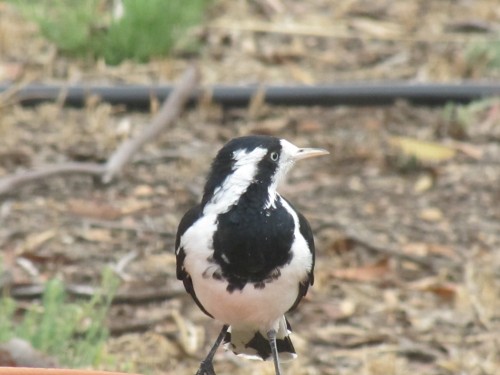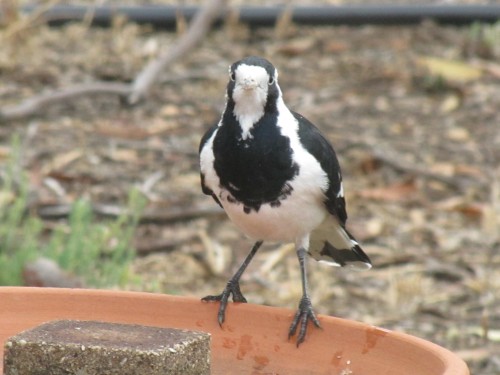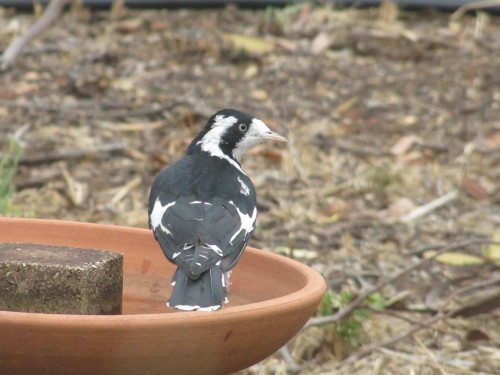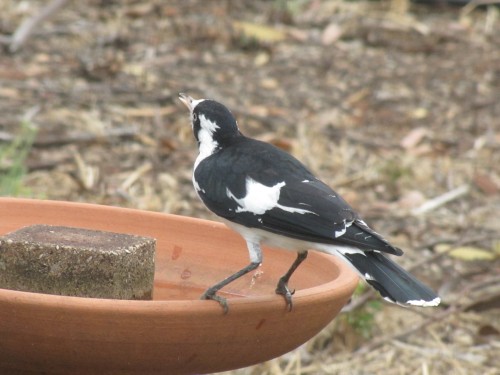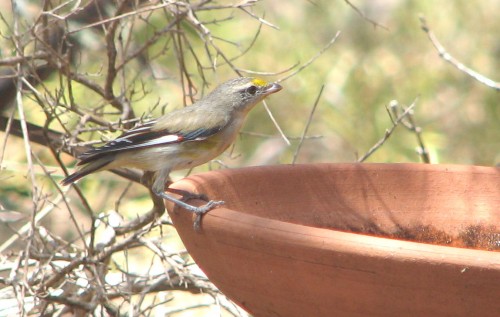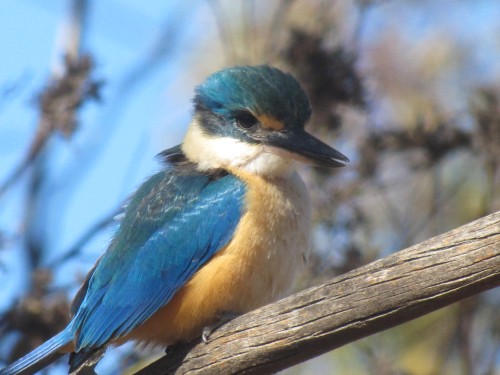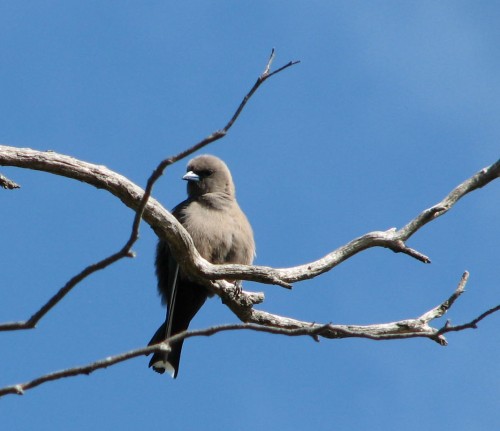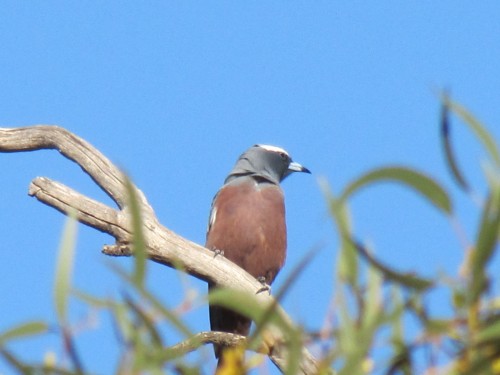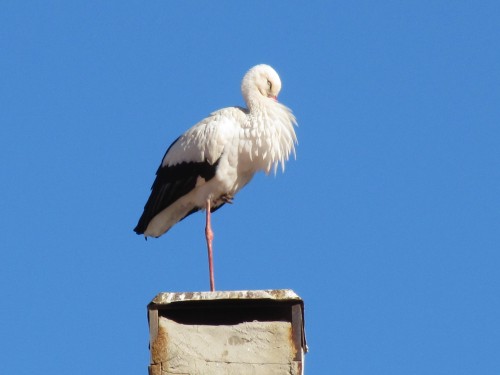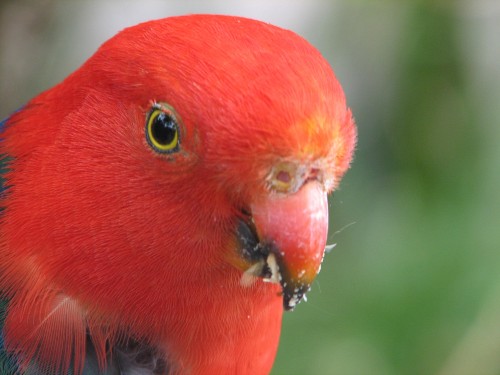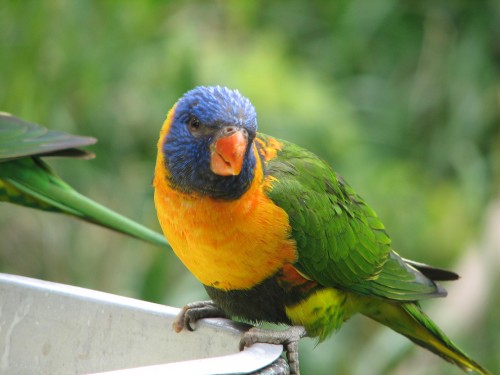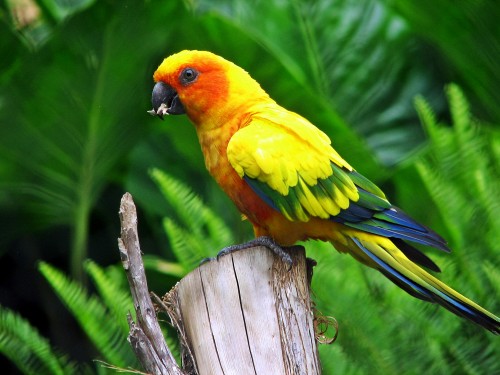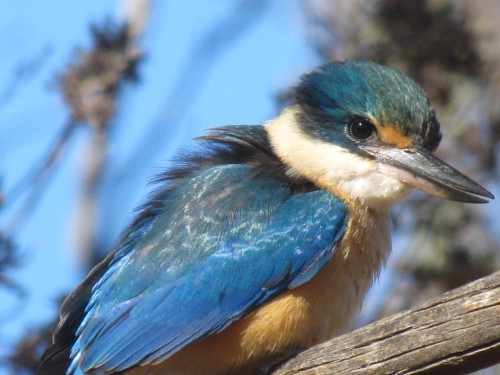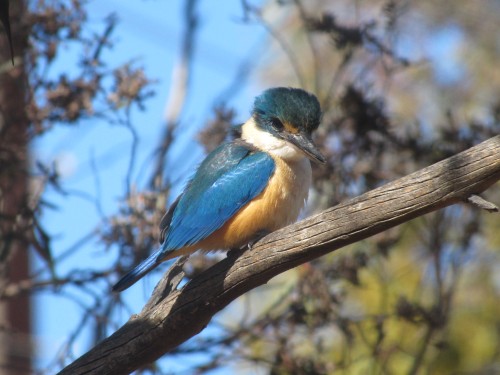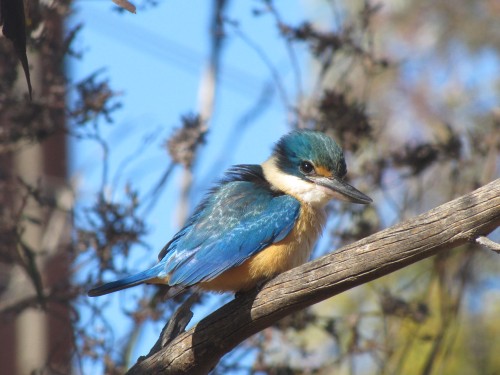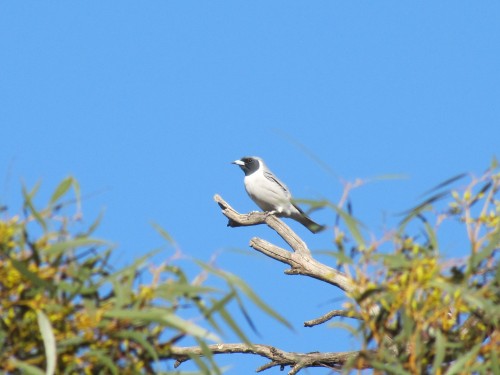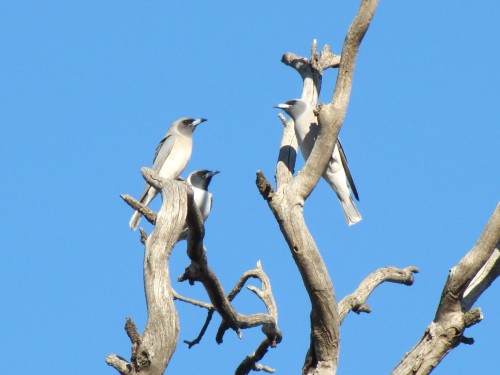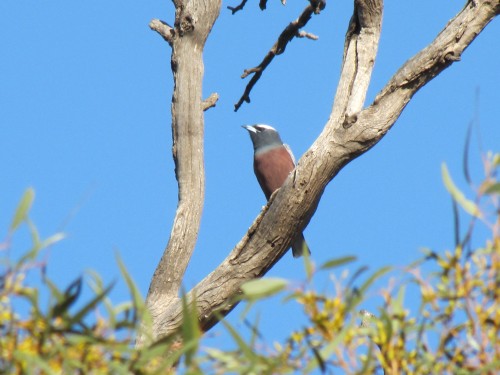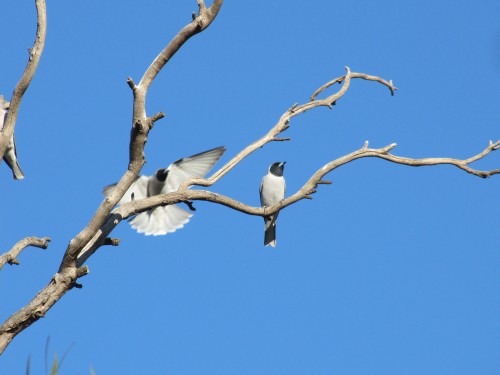Magpie Lark posing
Australian Magpie-larks are a resident breeding species in our garden. The usually make their mud-lined nests in one of the tall eucalypt trees next door, but some years ago they decided that one of our trees was suitable.
Despite not gracing us with their lovely nests, I regard them as a resident species. We see them in our garden every day and they are frequent visitors to our bird baths, especially on hot days. And we’ve had plenty hot days over this summer, including a record breaking series of heat-waves.
During one visit last week I managed this series of photos of a female as she came to the bird bath. Usually they come in pairs, calling loudly as they approach and then drink.
Pardalotes up close
Yesterday I was in the garden looking at one of the bushes coming into flower. Without any warning, two juvenile Striated Pardalotes landed on the fence not much more than a metre from where I stood. They looked me over for about 30 seconds before flying off.
Of course, like so many other encounters with birds, I didn’t have my camera with me because I had gone into the garden to check on the swimming pool, not thinking of seeing any birds up close.
Instead, I have posted a photo of the same species taken at one of our bird baths some time ago.
Happy Christmas
A VERY HAPPY CHRISTMAS TO ALL OF MY READERS.
Thank you all for visiting this site over the last 12 months.
There’s more to come in the coming year.
Today I feature some of my favourite photos from 2013.
A beautiful guest at breakfast
We had a very pleasant encounter while having breakfast this morning. I was focussed on completing the daily crossword in the newspaper when my wife excitedly drew my attention to the Sacred Kingfisher just outside the window of the sun room where we often eat our meals.
My bird records are not completely up to date, but we are certain it has been several years since we had seen one in our garden, making the sighting just that little bit extra special. I had preciously taken a few photos of this species but rarely at such close quarters. This was about 5 metres away and he couldn’t see us through the glass due to the early morning reflections.
I raced to the office to get my camera – yes – even at my age I can still raise a trot, albeit a modest one. For the next 15 minutes the kingfisher posed in a number of ways for my camera. The results speak for themselves.
In between taking photos we were able to observe some of its unique behaviours. As it sat almost motionless on a dead branch – typical perching behaviour – it would gently bob its tail. It would then turn its head slightly, usually peering intently at the ground. During the 15 minutes it stayed the bird dived like an arrow to the ground to catch its prey. We couldn’t see clearly what it was eating but this species eats beetles, grubs, cockroaches, small lizards like geckos and an assortment of small insects.
This species usually gives away its presence in the bush by its far-reaching ki-ki-ki-ki call. On this occasion it was silent throughout the 15 minutes.
The Sacred Kingfisher is found over much of Australia. They are migratory, moving south to breed in the summer months. Other kingfisher species in the region where I live in South Australia include the very similar Red-backed Kingfisher and the well-known Laughing Kookaburra.
This is just a sample of the best photos I took – out of 36 all together.
I was so inspired by this event that I went and wrote a poem about the encounter. You can read the poem here.
Two kinds of Woodswallows
I have to admit that I enjoy doing the clothes washing. It gets me outside in the sunshine and fresh air. except when it is raining and blowing a gale. On those occasions I usually hang the washing on clothes horses on the back veranda.
The main reason I enjoy doing the washing is to do a spot of birding while hanging the clothes on the clothes line, or when getting in the clothes once they have dried. Last Saturday was a beautiful spring day here in South Australia. we’ve had some foul windy weather this spring some it was a pleasure to get out in the beautiful sunshine.
As I was taking the dry clothes off the line and flock of about 20 birds flew overhead, circled high above our garden and then swooped down and settled on several trees – all only a few metres from where I stood. I immediately identified them as woodswallows, but to my excitement, there were actually two different species. Forgetting all about the clothes I raced inside, fired up my camera and started taking photos.
The flock was made up of about 10 Masked Woodswallows and 10 White-browed Woodswallows, both great species to see at any time. The last time I saw either species here was in the year 2000. The White-browed I hadn’t recorded in our garden since the early 1990s.
I took quite a few photos, the best are shown here. After a stay of about 10 minutes they all flew off together. Later I read online of several other sightings of these two species in various places around the state. They sure get around.
